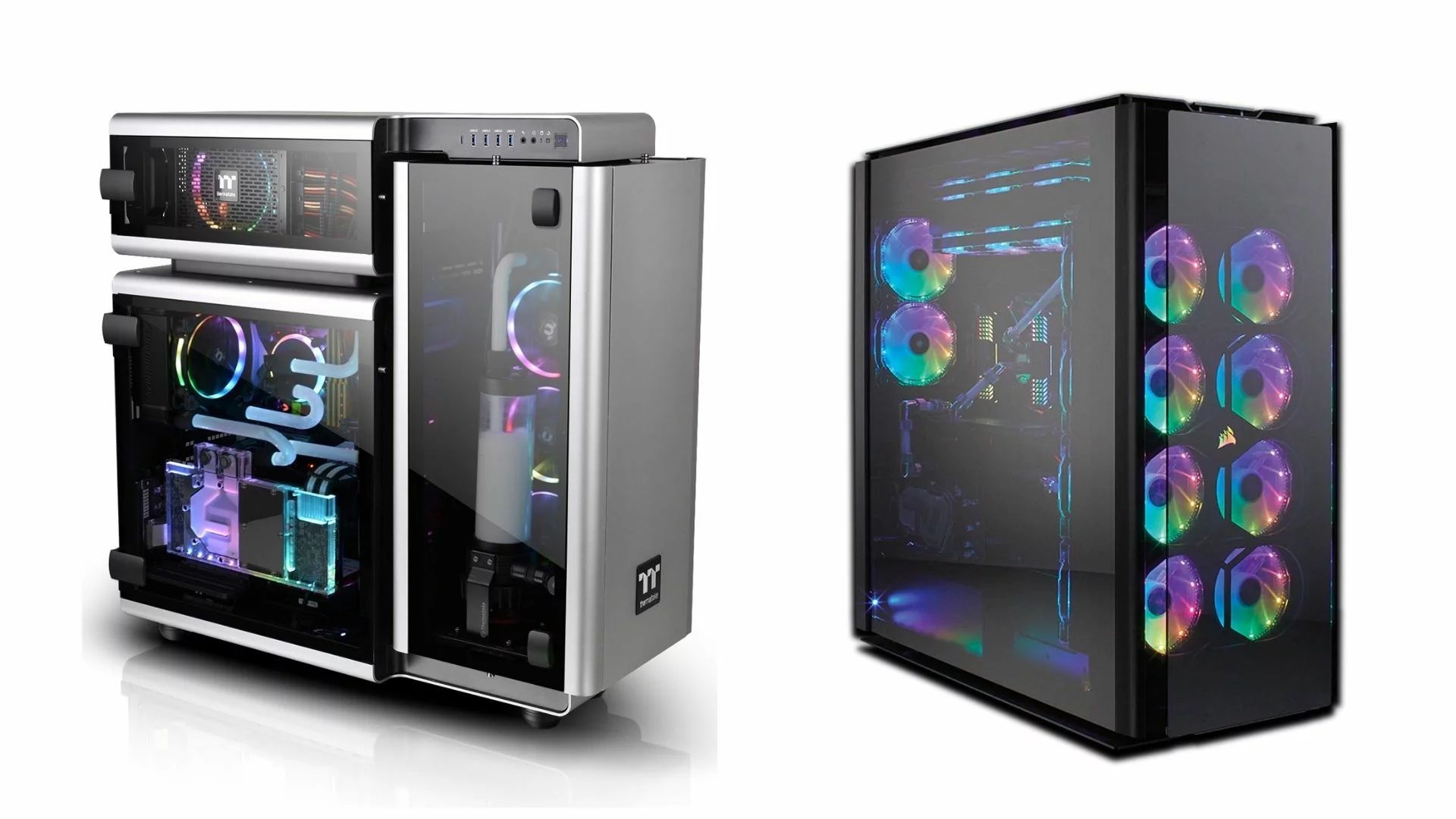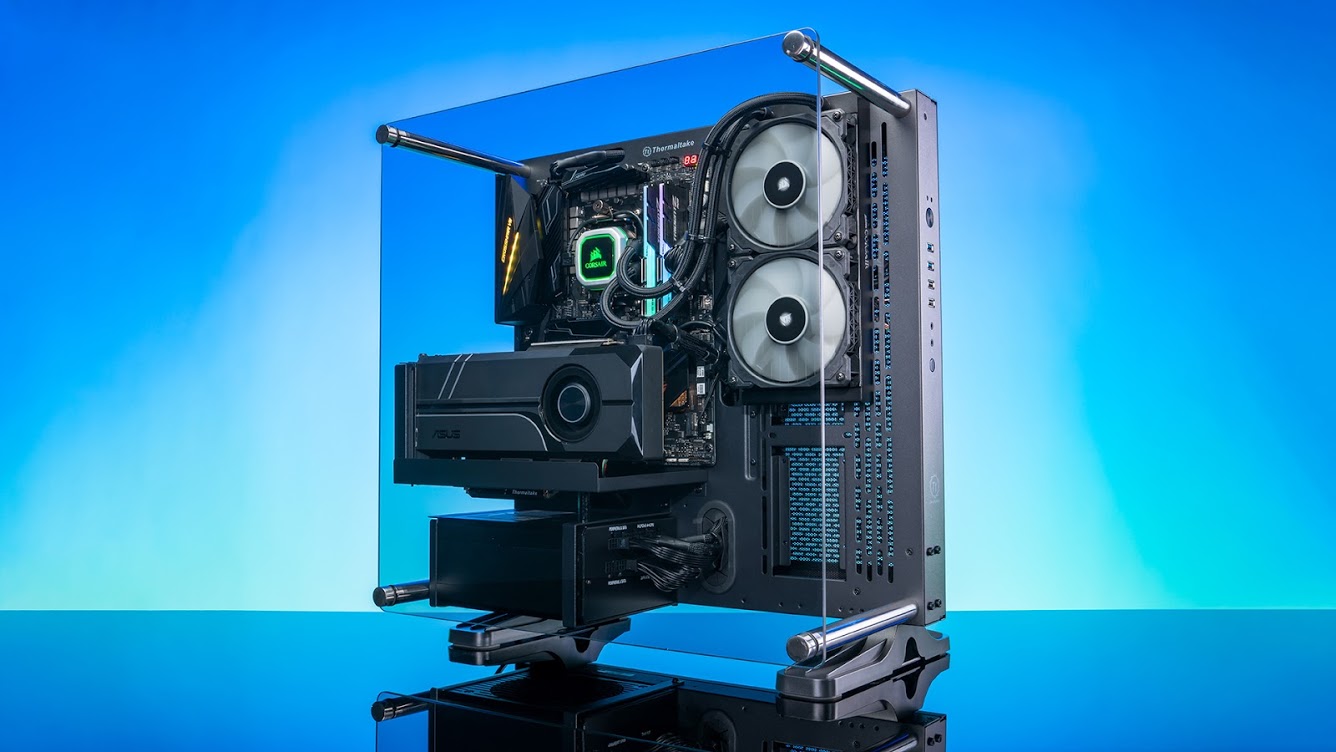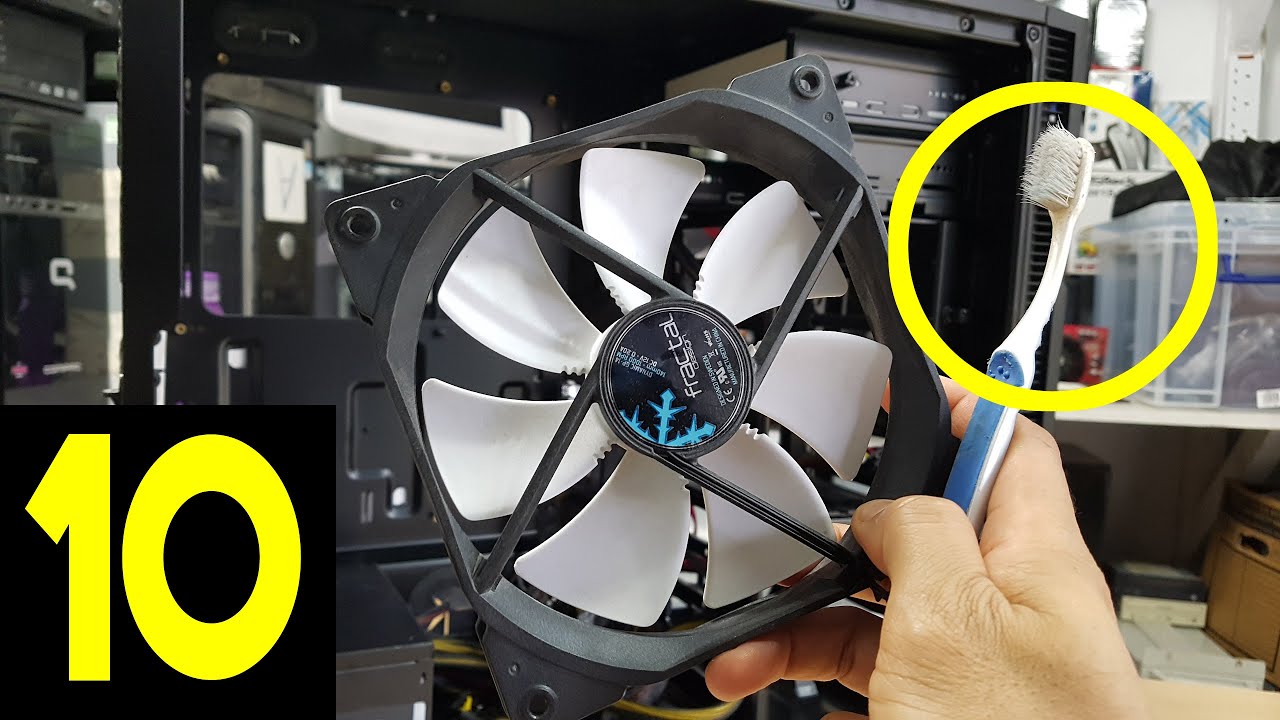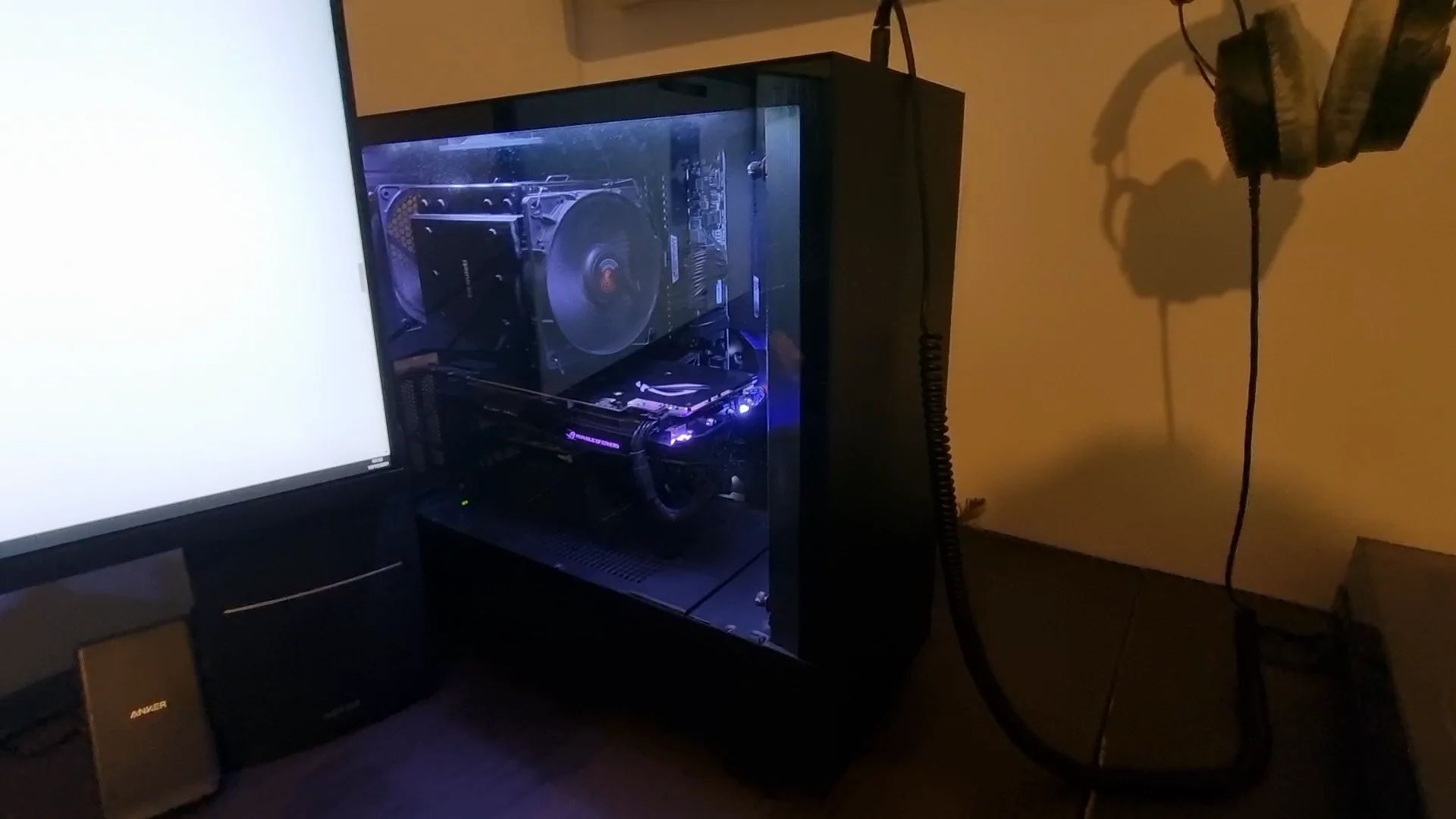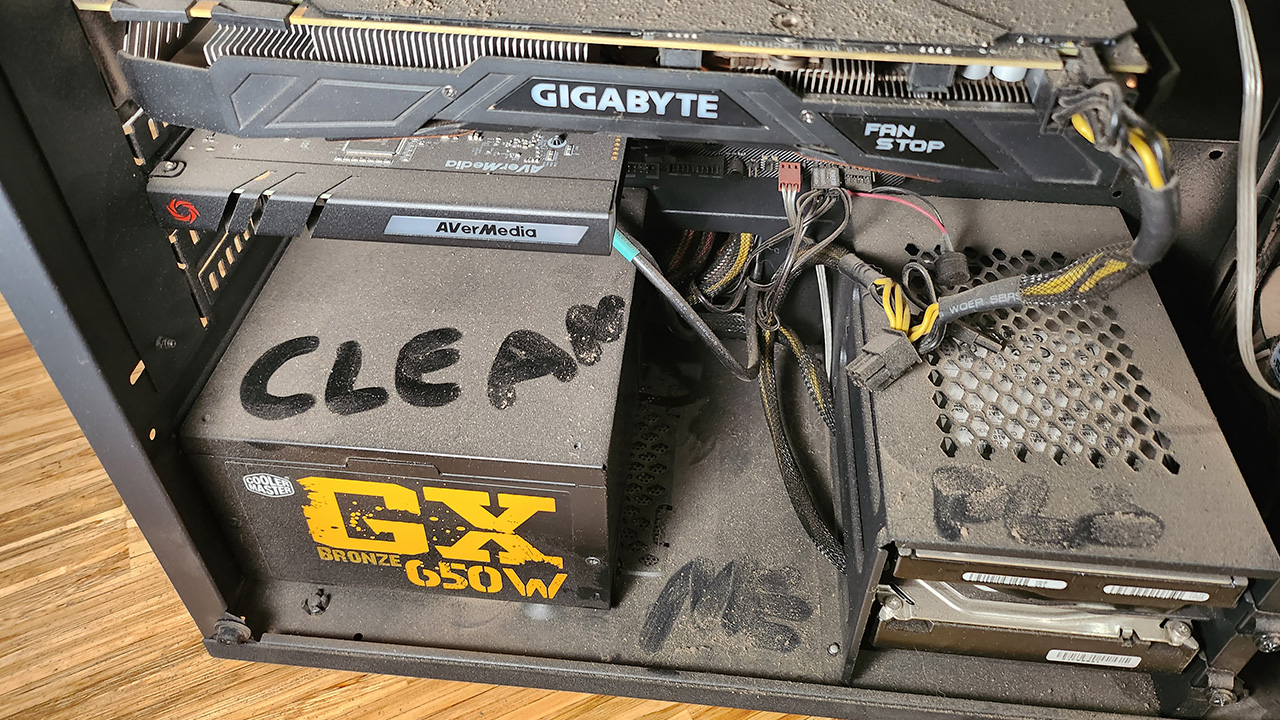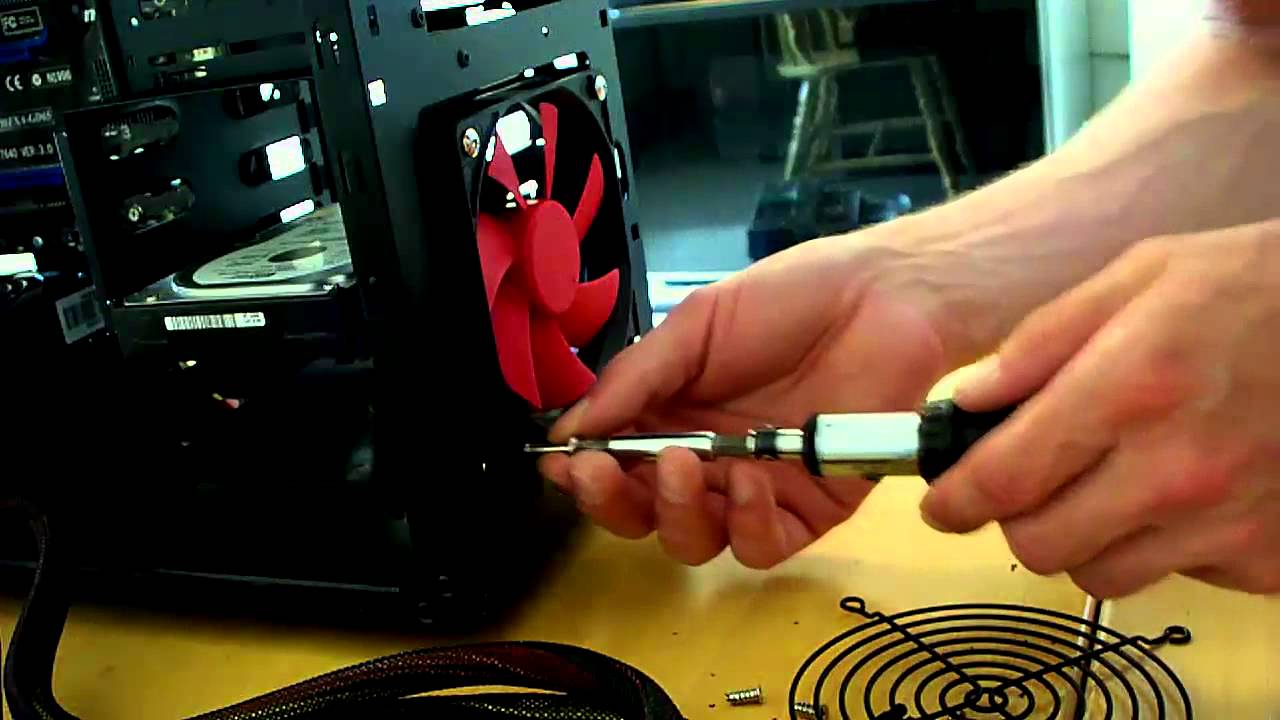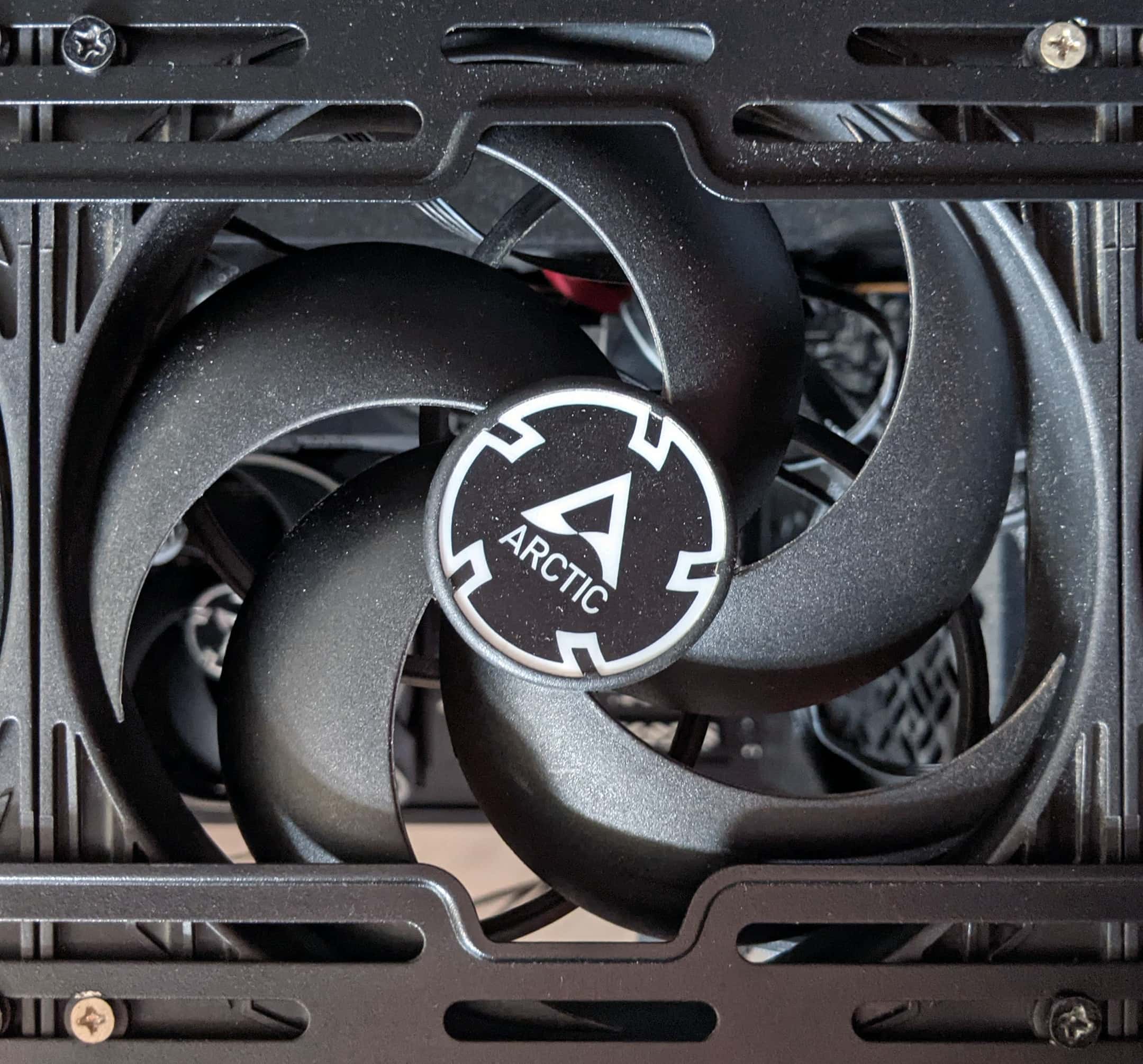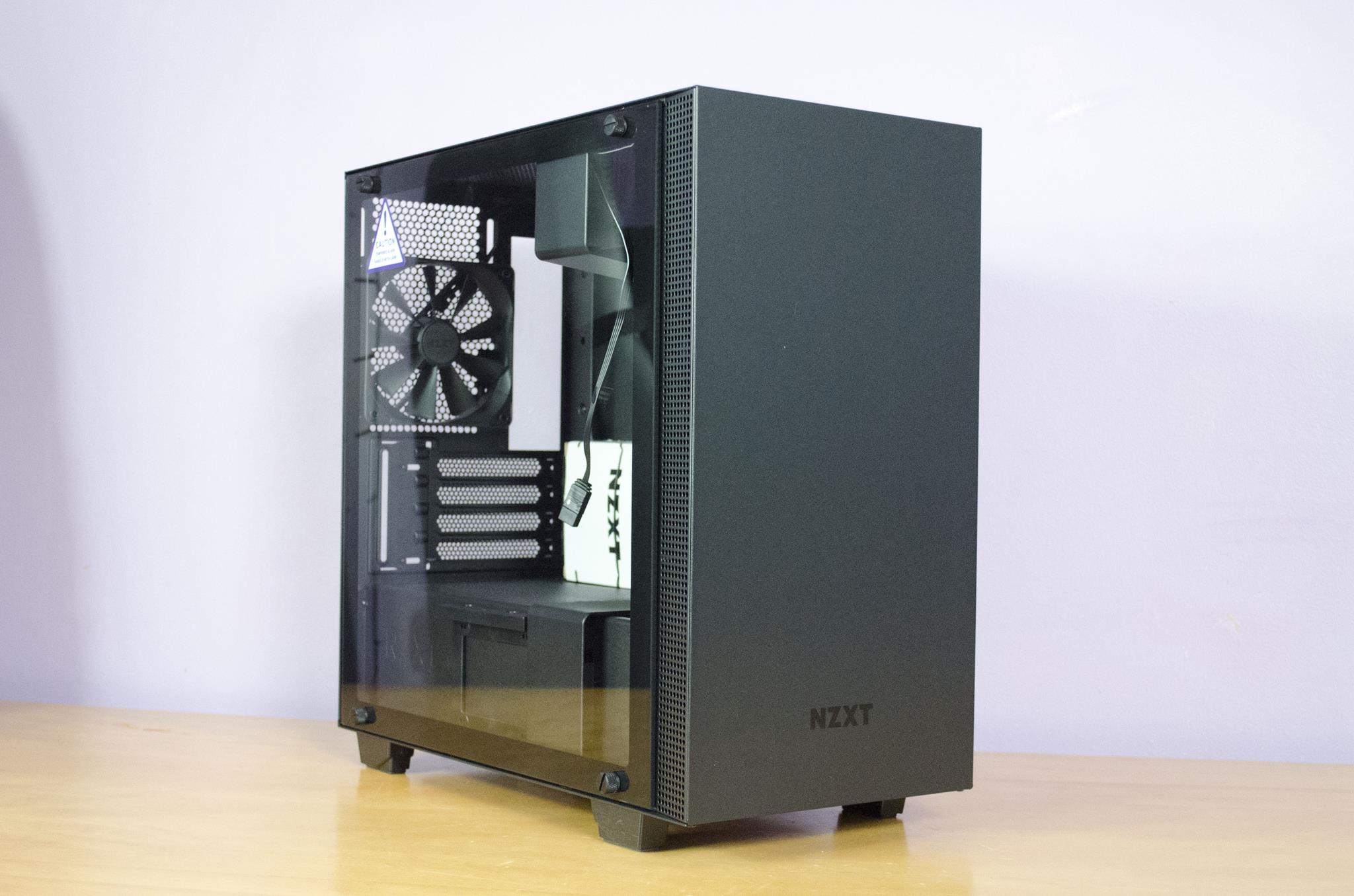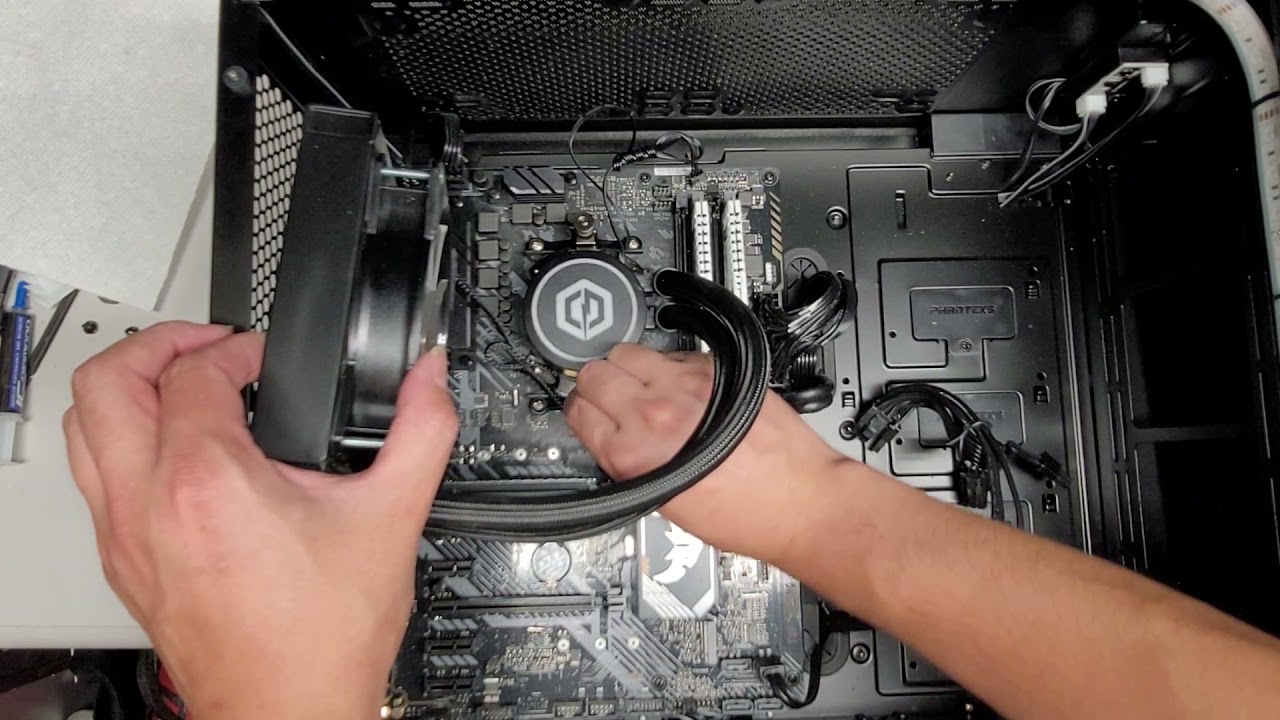Introduction
When it comes to building a high-performance gaming PC, one of the key factors to consider is the cooling system. A well-ventilated PC case is essential to keep your components running cool and maximize their lifespan. This is where the number of fans a PC case can support becomes crucial. The more fans you can install, the better the airflow and cooling potential.
With the increasing demands of modern computer hardware, PC case manufacturers have started designing cases that can accommodate multiple fans for optimal cooling. But with so many options available, it can be overwhelming to determine which PC case can hold the most fans.
In this article, we will explore the different factors to consider when choosing a PC case, the types of fans available, and showcase some PC cases that offer extensive fan support. We will also discuss the pros and cons of choosing a case with numerous fans, as it may not always be the best option for everyone.
So, whether you’re a serious gamer, a content creator, or just someone who wants their PC to stay cool under heavy loads, read on to discover the factors to consider when selecting a PC case with maximum fan support.
Factors to consider when choosing a PC case
Choosing the right PC case with adequate fan support requires careful consideration of several factors. Understanding these factors will help you select a case that not only fits your cooling needs but also accommodates your hardware and personal preferences.
1. Size and Form Factor: The size of your PC case will determine the maximum number of fans it can support. Full tower cases typically offer more fan mounting points compared to mid-tower or mini-tower cases. Consider the form factor of your motherboard as well, as it will dictate the case size you need.
2. Fan Mounting Points: Look for a case that has multiple fan mounting points, both at the front and rear. The top of the case often offers additional mounting locations. Ensure that these mounting points are compatible with the fan sizes you intend to use.
3. Compatibility with Hardware: Check if the case supports the size and type of fans you plan to install. Consider the maximum fan size that can fit in the front, rear, and top of the case. Additionally, ensure there is enough clearance for large CPU coolers and graphics cards.
4. Airflow Design: Pay attention to the overall airflow design of the case. Look for features like ample ventilation, mesh panels, and fan filters to prevent dust accumulation. A well-ventilated case with optimized airflow will help dissipate heat effectively.
5. Cable Management: Investing in a case with good cable management features is essential. Proper cable routing not only enhances the aesthetics but also improves airflow within the case, resulting in better cooling performance.
6. Build Quality and Aesthetics: Consider the build quality, material, and overall aesthetics of the case. Choose a case that not only offers excellent fan support but also complements your overall setup or personal style.
Remember, while the number of fans a case can hold is important, it is equally crucial to consider the overall ventilation, size compatibility, and cable management features to ensure a well-balanced and efficient cooling system for your PC.
Different types of fans
When it comes to selecting fans for your PC case, there are several different types available in the market. Understanding the characteristics and differences between these fan types will help you make an informed decision based on your cooling requirements and noise preferences.
1. Airflow Fans: These fans are designed to move a high volume of air. They are often used as intake or exhaust fans, providing excellent cooling performance. Airflow fans typically have larger blades and higher RPM (Revolutions Per Minute) for enhanced airflow.
2. Static Pressure Fans: Static pressure fans are ideal for situations where airflow might be restricted, such as when using radiators or dense heatsinks. These fans are designed to push air through obstacles, providing effective cooling in tight spaces.
3. Noise-Optimized Fans: If having a quiet PC is a priority for you, consider using noise-optimized fans. These fans are designed with low RPM and specially engineered blades to minimize noise while still providing adequate airflow. They are a great choice for those who value a silent computing experience.
4. RGB Fans: RGB (Red, Green, Blue) fans are a popular choice among PC enthusiasts who want to add a touch of visual flair to their build. These fans feature customizable lighting effects and can be synchronized with other RGB components to create a stunning lighting display.
5. Ventilation Fans: Ventilation fans are primarily used to improve overall airflow within the case by extracting warm air and promoting fresh air intake. They are often mounted on the top or sides of the case to assist in efficient heat dissipation.
6. High-CFM (Cubic Feet per Minute) Fans: High-CFM fans are designed to move a substantial amount of air and are excellent for situations where maximum airflow is required, such as in systems with high-end components or in overclocked setups.
Remember to take into account the noise levels, airflow requirements, and aesthetics when deciding which type of fan is best suited for your specific needs. By selecting the right fans, you can achieve optimal cooling performance while maintaining a visually appealing PC setup.
PC cases with maximum fan support
For enthusiasts who prioritize extensive cooling capabilities, there are PC cases available that offer exceptional fan support. These cases are designed to accommodate a large number of fans, ensuring optimal airflow and cooling for high-performance systems. Let’s take a look at some popular options:
1. Corsair Obsidian Series 1000D: This full tower case is a behemoth with space to house up to eighteen 120mm fans or eight 140mm fans. It features a unique triple-chamber design that separates components and maximizes cooling potential.
2. Thermaltake View 71 RGB: With its tempered glass panels and stunning RGB lighting, this full tower case is not only visually appealing but also capable of housing up to nine 120mm fans or three 140mm fans. It offers excellent cooling capabilities and ample space for high-performance hardware.
3. NZXT H710i: This mid-tower case offers a sleek and minimalist design while supporting up to seven 120mm fans or four 140mm fans. It features an integrated Smart Device that controls fan speeds and RGB lighting, providing a convenient and efficient cooling solution.
4. Cooler Master MasterCase H500: With its mesh front panel and support for up to six 120mm fans or two 200mm fans, this mid-tower case excels in airflow optimization. It also offers a variety of mounting options for liquid cooling radiators.
5. Phanteks Enthoo Pro M: This mid-tower case is designed with airflow in mind and can accommodate up to eight 120mm fans or three 140mm fans. It boasts a spacious interior with excellent cable management capabilities.
These are just a few examples of PC cases that provide extensive fan support. Each case offers its own unique features and design elements to cater to different requirements and aesthetics. Remember to consider factors such as size, compatibility, airflow design, and cable management when choosing the right case for your needs.
With these high-capacity fan cases, you can create a cooling system that will keep your PC running at optimal temperatures, even during intense gaming sessions or heavy workloads.
PC cases with good airflow
Adequate airflow is crucial for maintaining optimal temperatures and preventing heat buildup in your PC components. If you prioritize efficient cooling, there are PC cases designed specifically to promote exceptional airflow. Let’s explore some options for cases with excellent airflow:
1. Cooler Master HAF XB EVO: This unique cube-style case features a high airflow design with two 120mm fans in the front and one 120mm fan in the rear. Its open-air design allows for efficient heat dissipation and easy access to components for maintenance.
2. Corsair Carbide Series Air 540: With dual-chamber layout and plenty of ventilation options, this mid-tower case offers superb airflow. It supports up to six 120mm fans or five 140mm fans, ensuring effective cooling for your hardware.
3. Fractal Design Meshify C: This compact mid-tower case features a mesh front panel for unrestricted airflow. It has room for up to five 120mm fans or four 140mm fans, along with convenient dust filters to prevent dirt and debris from entering the system.
4. Phanteks Eclipse P400: This sleek mid-tower case utilizes a full metal panel with a perfectly placed ventilation grille for improved airflow. With accommodation for up to six 120mm fans or three 140mm fans, it offers ample cooling potential.
5. NZXT H510 Elite: This visually stunning mid-tower case features a front tempered glass panel with ample ventilation for excellent airflow. It supports up to seven 120mm fans or two 140mm fans, along with mounting options for liquid cooling radiators.
These cases prioritize airflow with optimized designs, allowing cool air to be drawn in and hot air to be expelled efficiently. By choosing a case with good airflow, you can keep your components running at appropriate temperatures and improve the overall performance and longevity of your system.
Remember to consider factors such as fan placement options, dust filtration, and cable management when selecting a case with good airflow. This will help ensure that your PC remains cool and reliable even during demanding tasks or extended gaming sessions.
Pros and cons of choosing a case with numerous fans
Optimal cooling is a top priority for many PC enthusiasts, and choosing a case with numerous fans can provide several benefits. However, it’s important to consider both the advantages and potential drawbacks before making a decision. Let’s explore the pros and cons of choosing a case with a high number of fans:
Pros:
1. Improved Cooling Performance: More fans mean increased airflow, resulting in better cooling for your components. This can help prevent overheating and extend the lifespan of your hardware.
2. Enhanced Thermal Management: With additional fans, heat is dissipated more efficiently, allowing for more stable and consistent temperatures during intense tasks or overclocking.
3. Reduced Noise Levels: While it may seem counterintuitive, having numerous fans operating at lower RPM can result in quieter noise levels compared to a few fans running at higher speeds. This is due to the reduced strain on each fan, resulting in a more peaceful computing experience.
4. Flexibility for Customization: A case with multiple fan mounts allows for greater customization options. You can experiment with different fan setups and configurations to find the perfect balance between cooling efficiency and aesthetics.
5. Future-Proofing: Investing in a case with extensive fan support ensures that you have room for upgrades and can adapt to more demanding cooling requirements in the future.
Cons:
1. Higher Cost: Cases with numerous fan mounts tend to be more expensive than those with limited fan support. This can be a deterrent for budget-conscious individuals.
2. Complicated Installation and Cable Management: With more fans comes the need for additional cables and connectors. This can make cable management more challenging and increase the time required for installation.
3. Increased Noise Potential: While having more fans can potentially reduce noise levels, poor fan selection or inadequate fan control can lead to a louder system. It’s important to consider fan quality and manage fan speeds effectively to keep noise levels in check.
4. Potential for Dust Accumulation: More fans mean more openings for dust to enter the case. Regular cleaning and maintenance are necessary to prevent dust buildup, which can hinder airflow and affect cooling performance.
Before deciding on a case with numerous fans, carefully consider your specific needs and priorities. Assess the potential benefits against the associated costs and maintenance requirements to ensure that it aligns with your budget, desired noise levels, and long-term cooling goals.
Conclusion
When it comes to selecting a PC case with maximum fan support, there are several factors to consider, such as size, fan mounting points, hardware compatibility, airflow design, cable management, build quality, and aesthetics. By carefully evaluating these factors, you can choose a case that not only accommodates a high number of fans but also meets your specific cooling needs and preferences.
Furthermore, understanding the different types of fans available, such as airflow fans, static pressure fans, noise-optimized fans, RGB fans, ventilation fans, and high-CFM fans, allows you to select the most suitable fan type for your cooling requirements and noise preferences.
We have also explored PC cases with exceptional fan support, highlighting options with extensive fan mounting points and excellent airflow design. These cases, such as the Corsair Obsidian Series 1000D, Thermaltake View 71 RGB, NZXT H710i, Cooler Master MasterCase H500, and Phanteks Enthoo Pro M, offer impressive cooling capabilities for high-performance systems.
Additionally, we discussed the pros and cons of choosing a case with numerous fans. While such cases provide improved cooling performance, thermal management, reduced noise levels, flexibility for customization, and future-proofing, they can also come with higher costs, complicated installation and cable management, increased noise potential, and potential for dust accumulation.
In conclusion, selecting a PC case with maximum fan support requires careful consideration of various factors, including size, compatibility, airflow design, and cable management. Understanding the different types of fans available and their respective advantages can aid in making an informed decision. Ultimately, choosing the right case will result in optimal cooling for your PC, ensuring stable performance and longer lifespan for your components.







